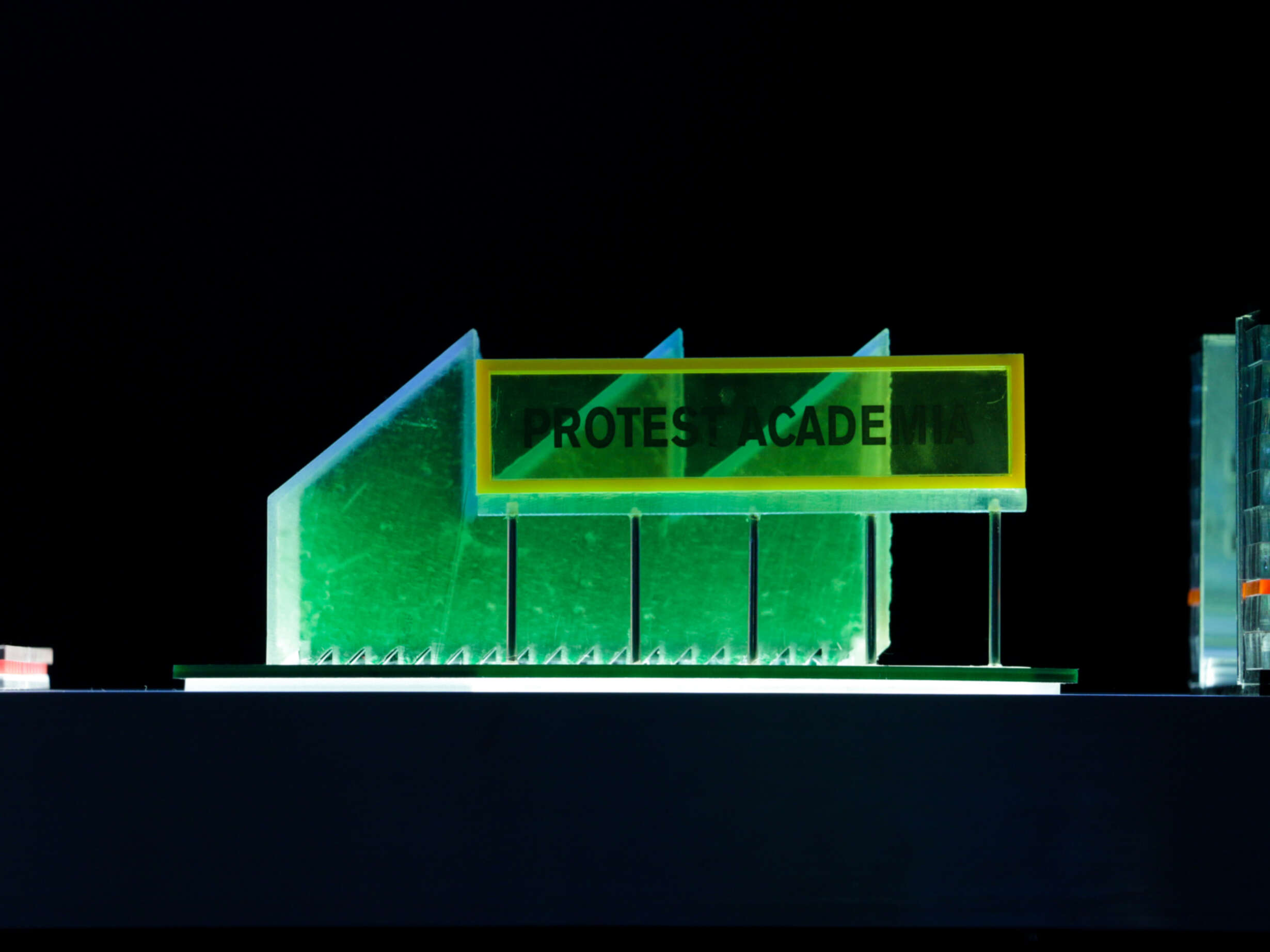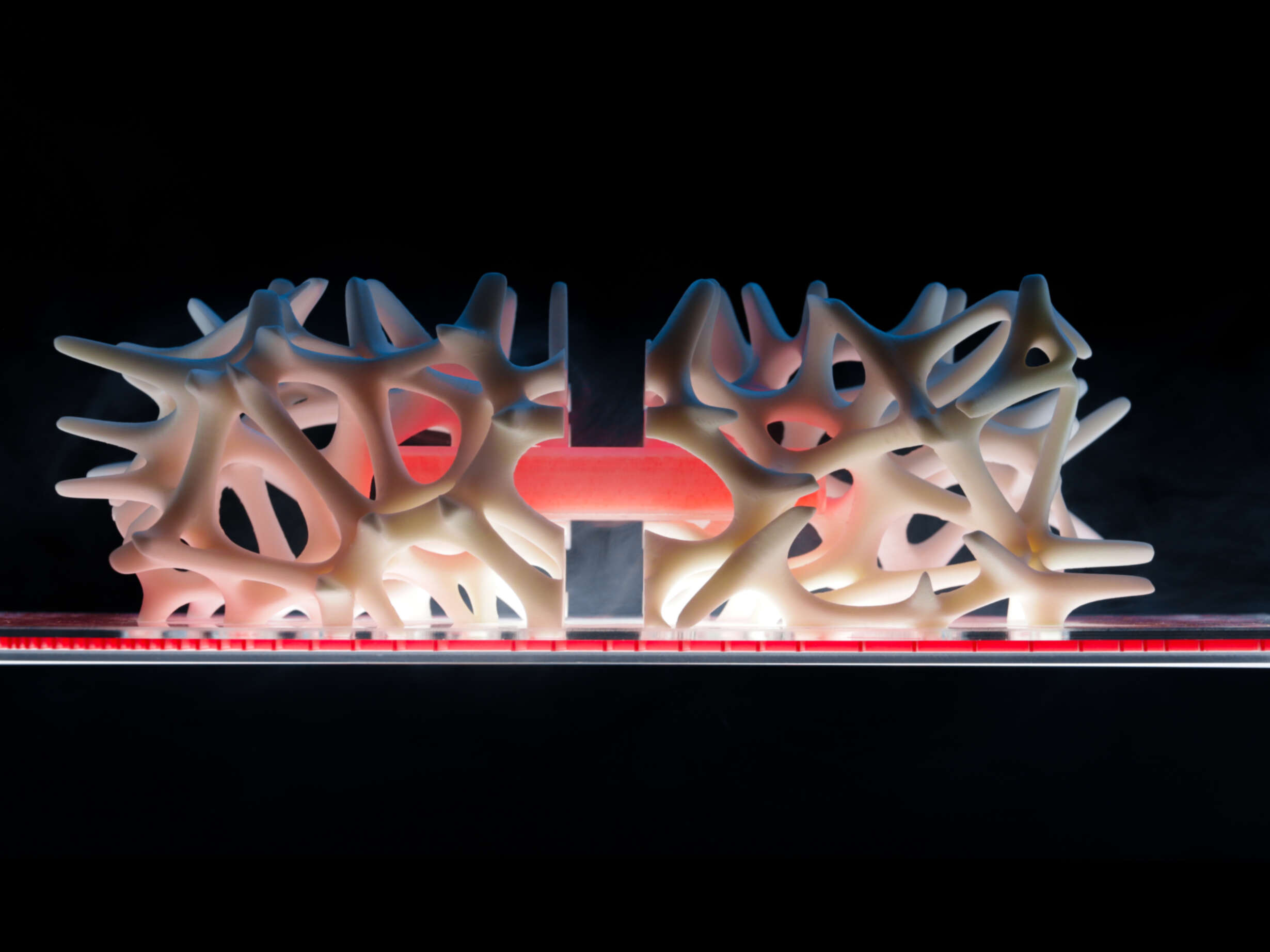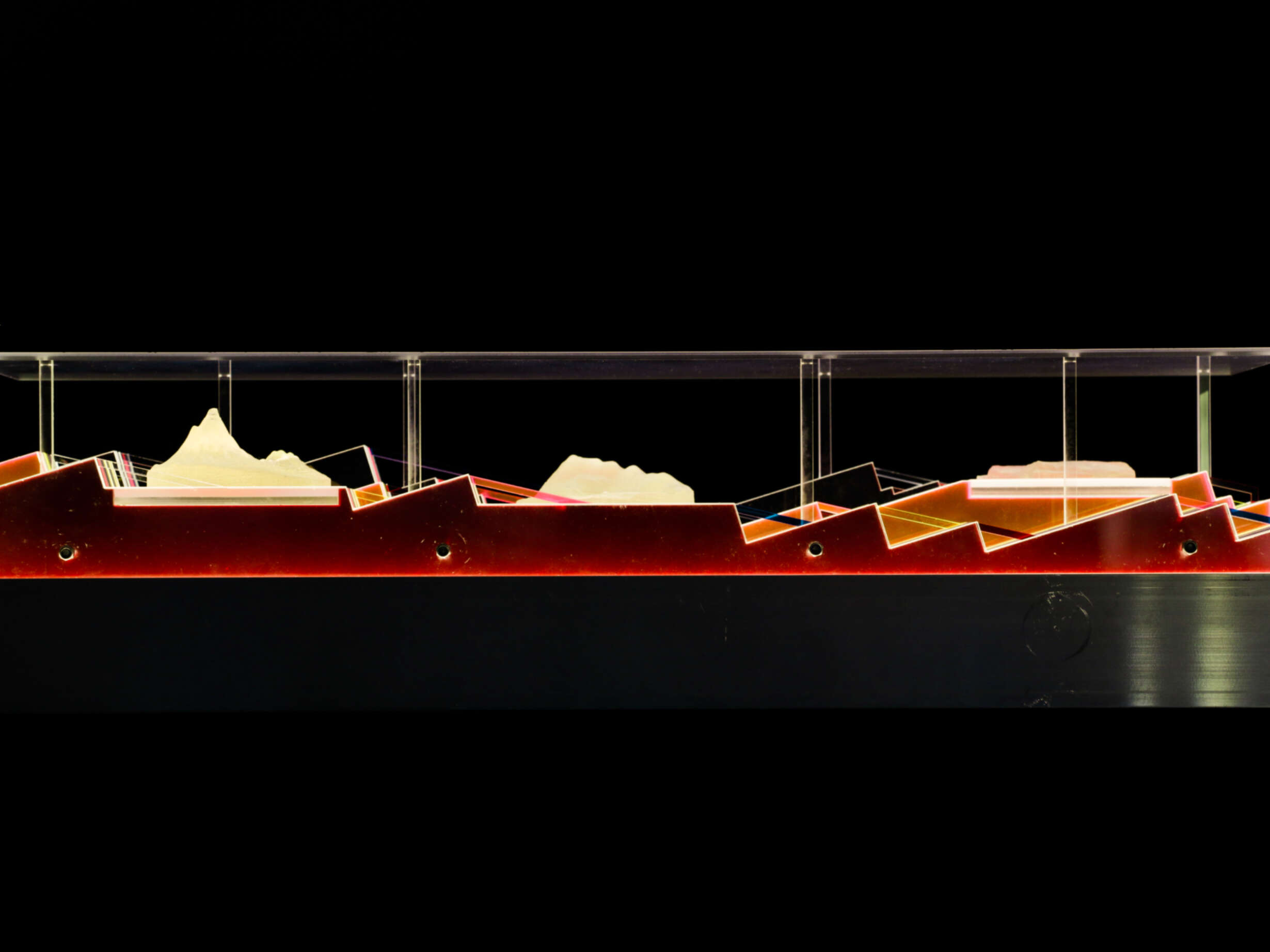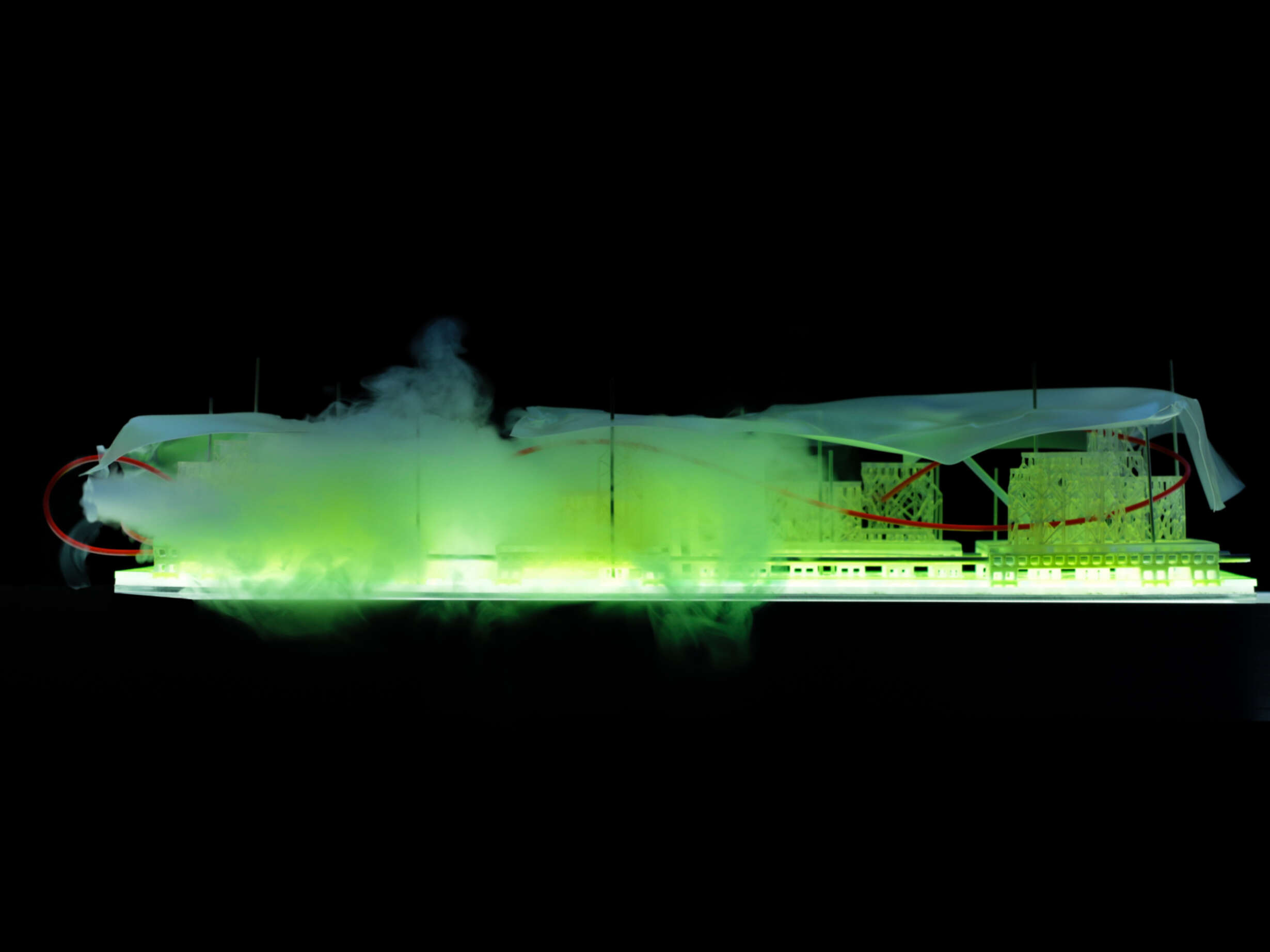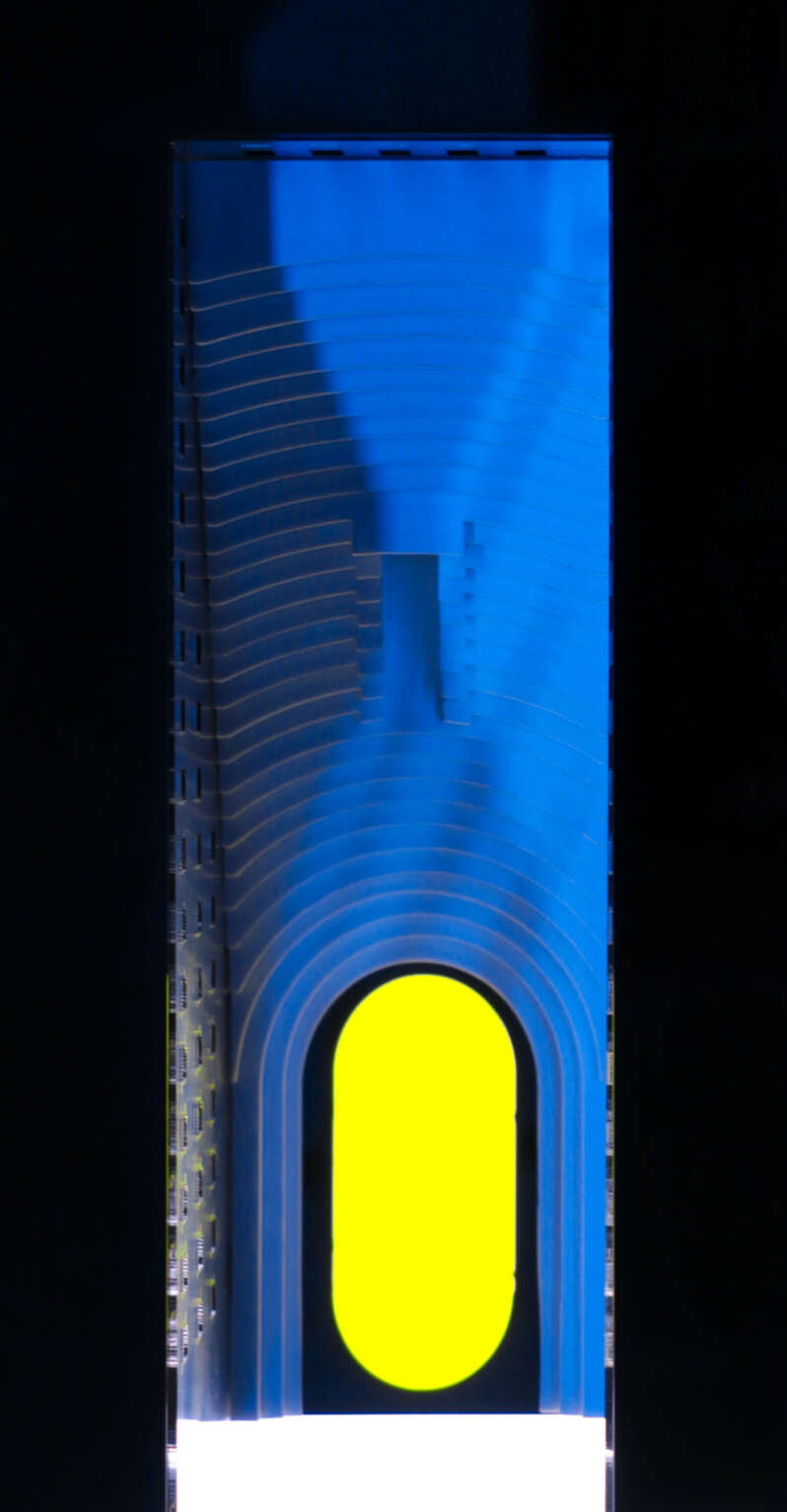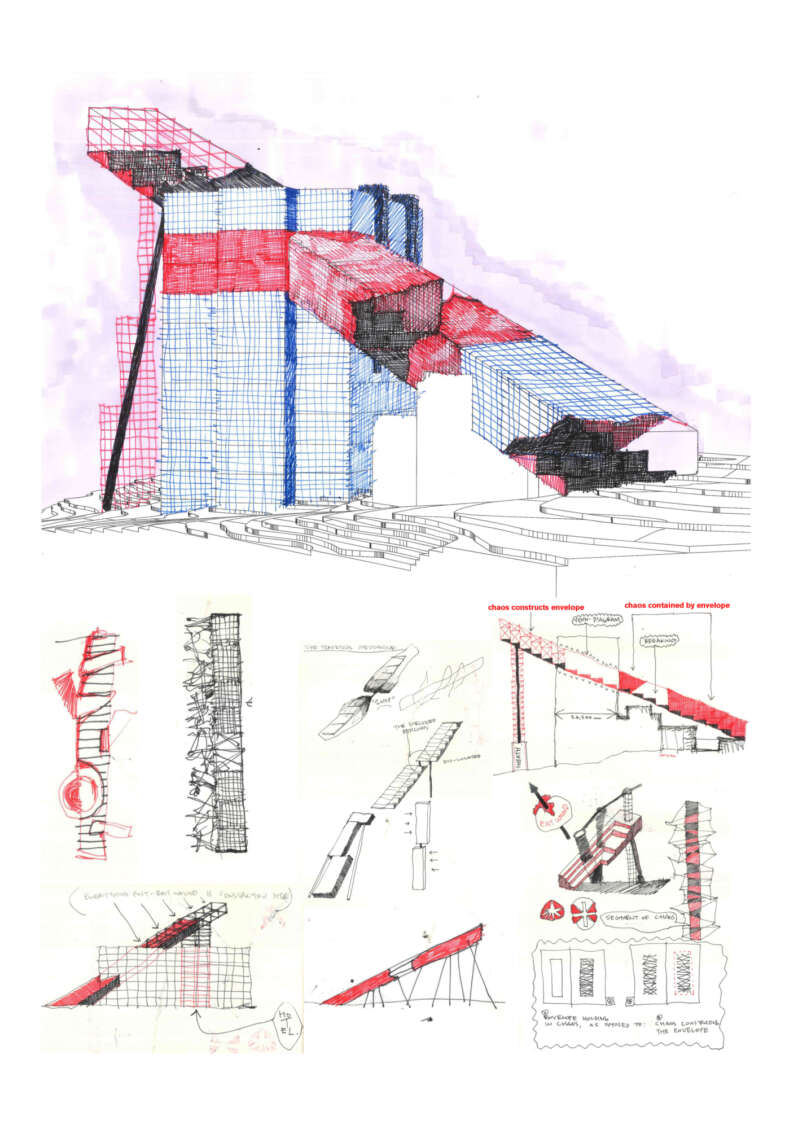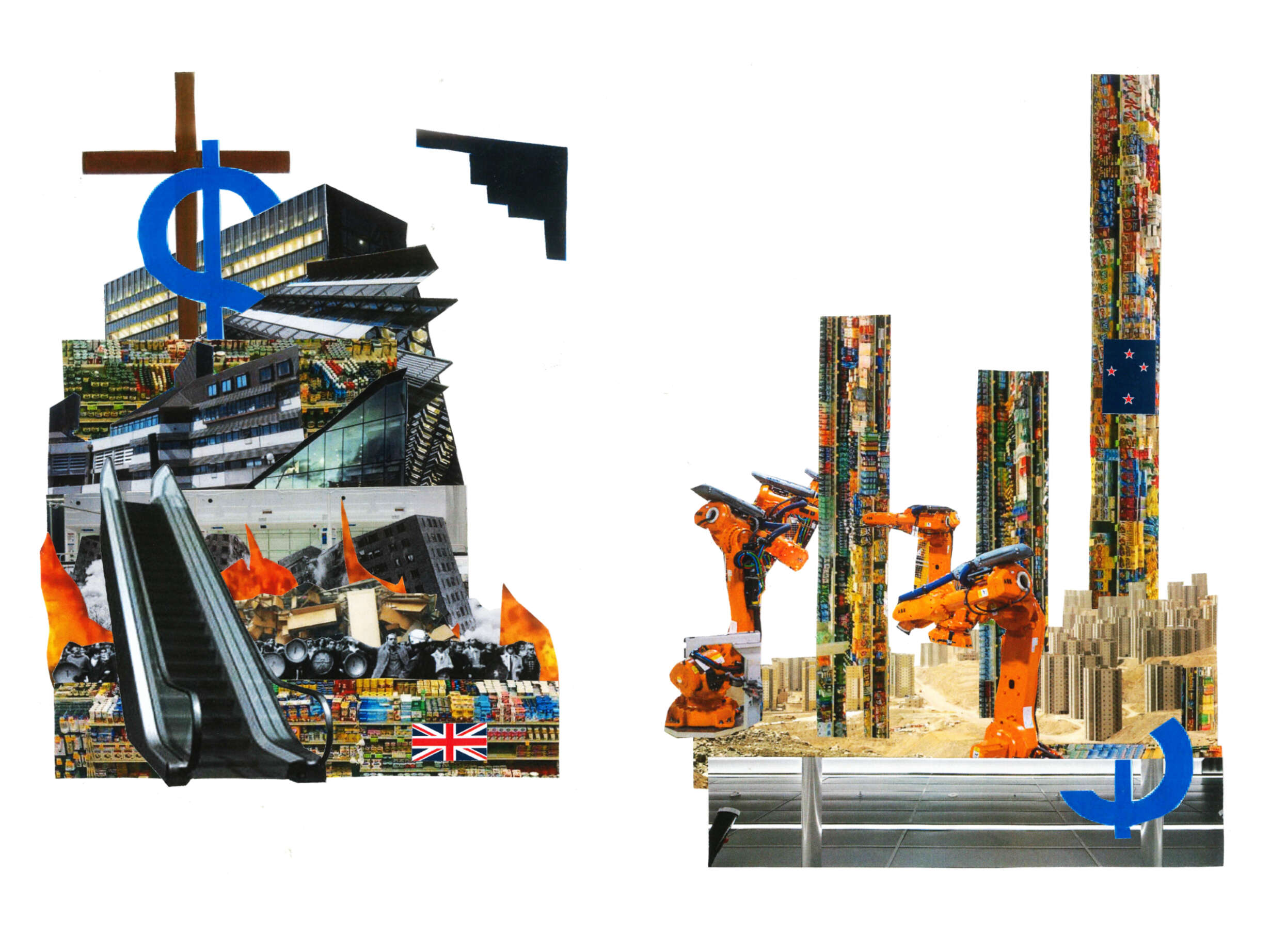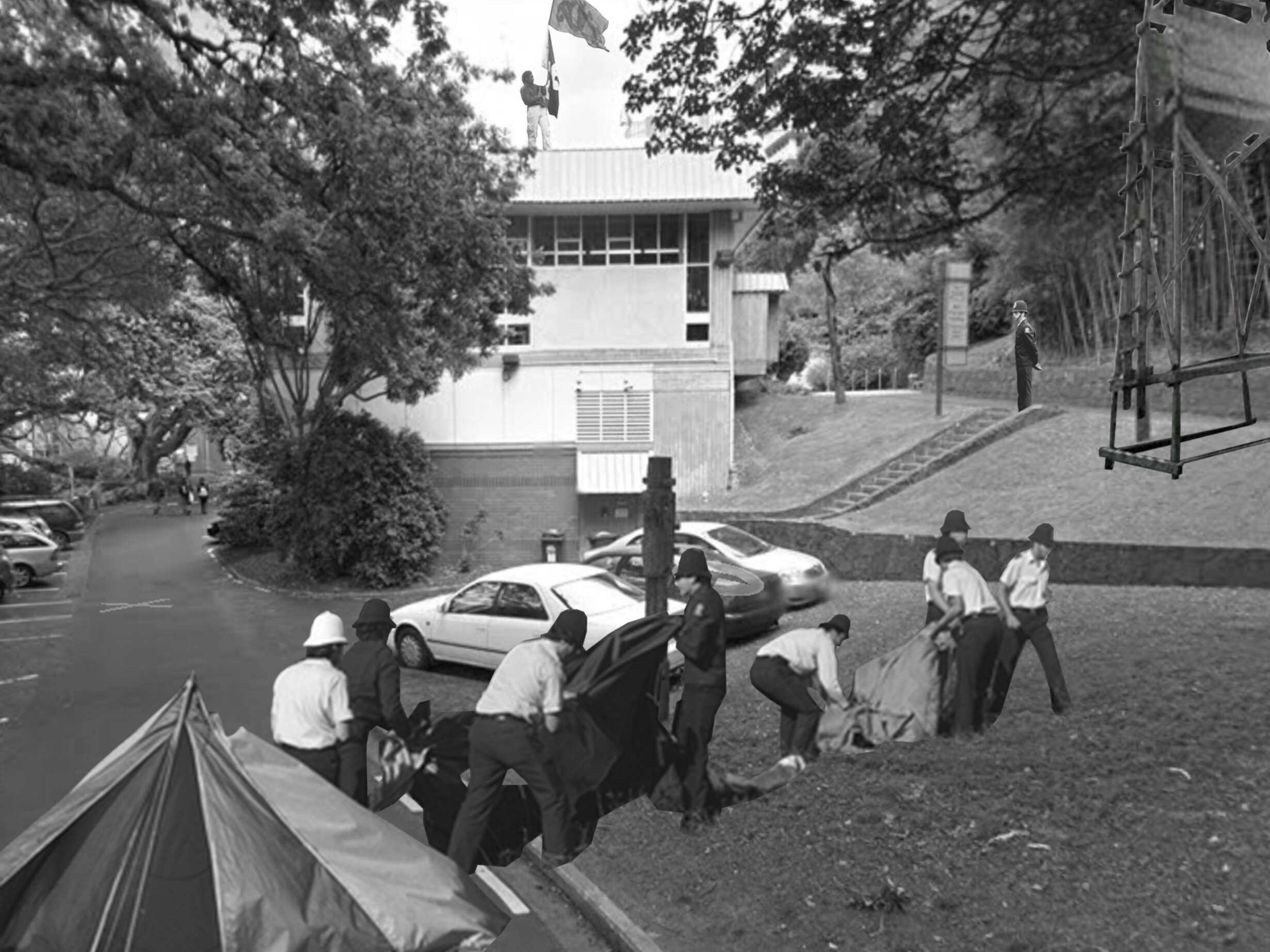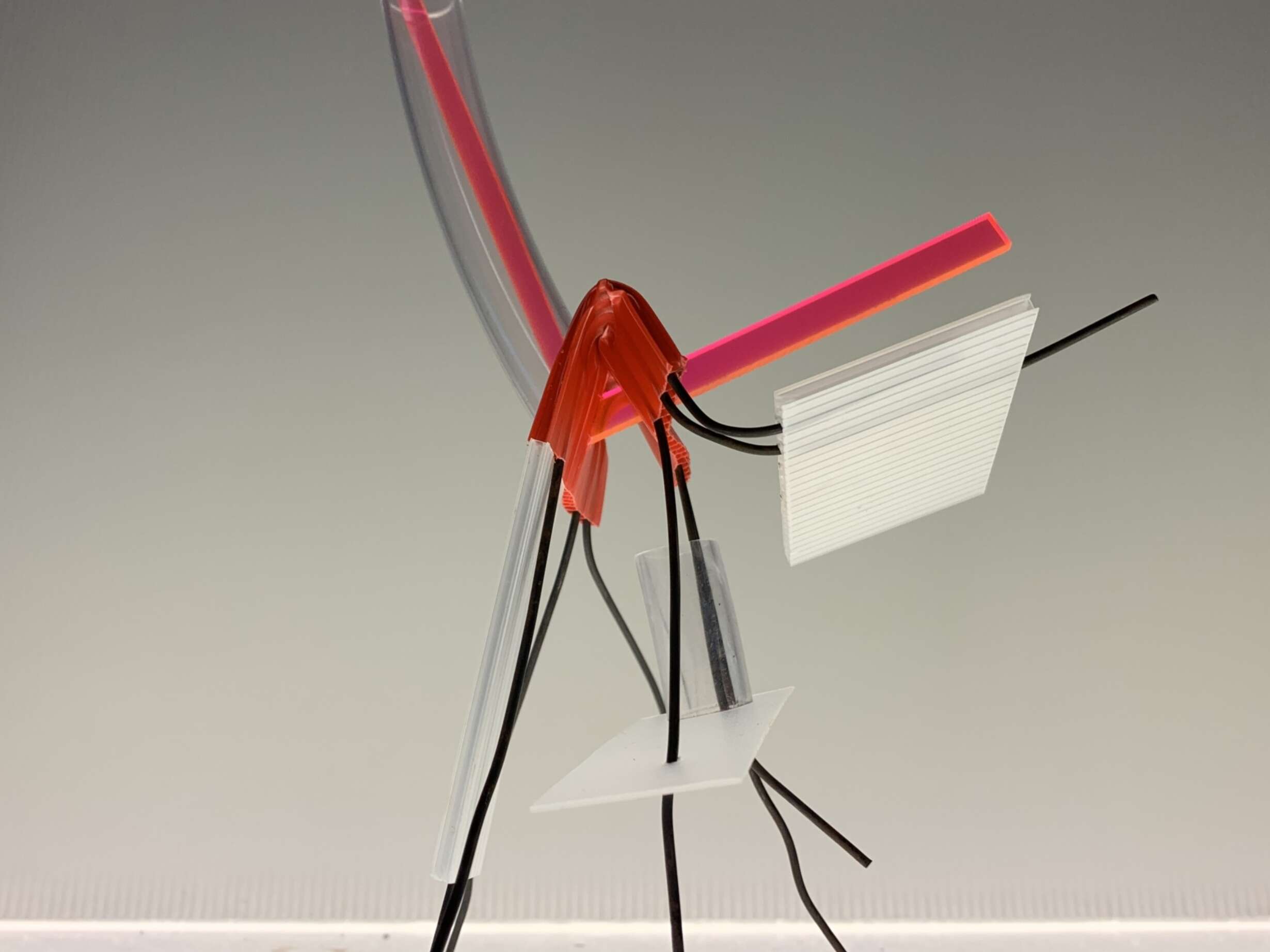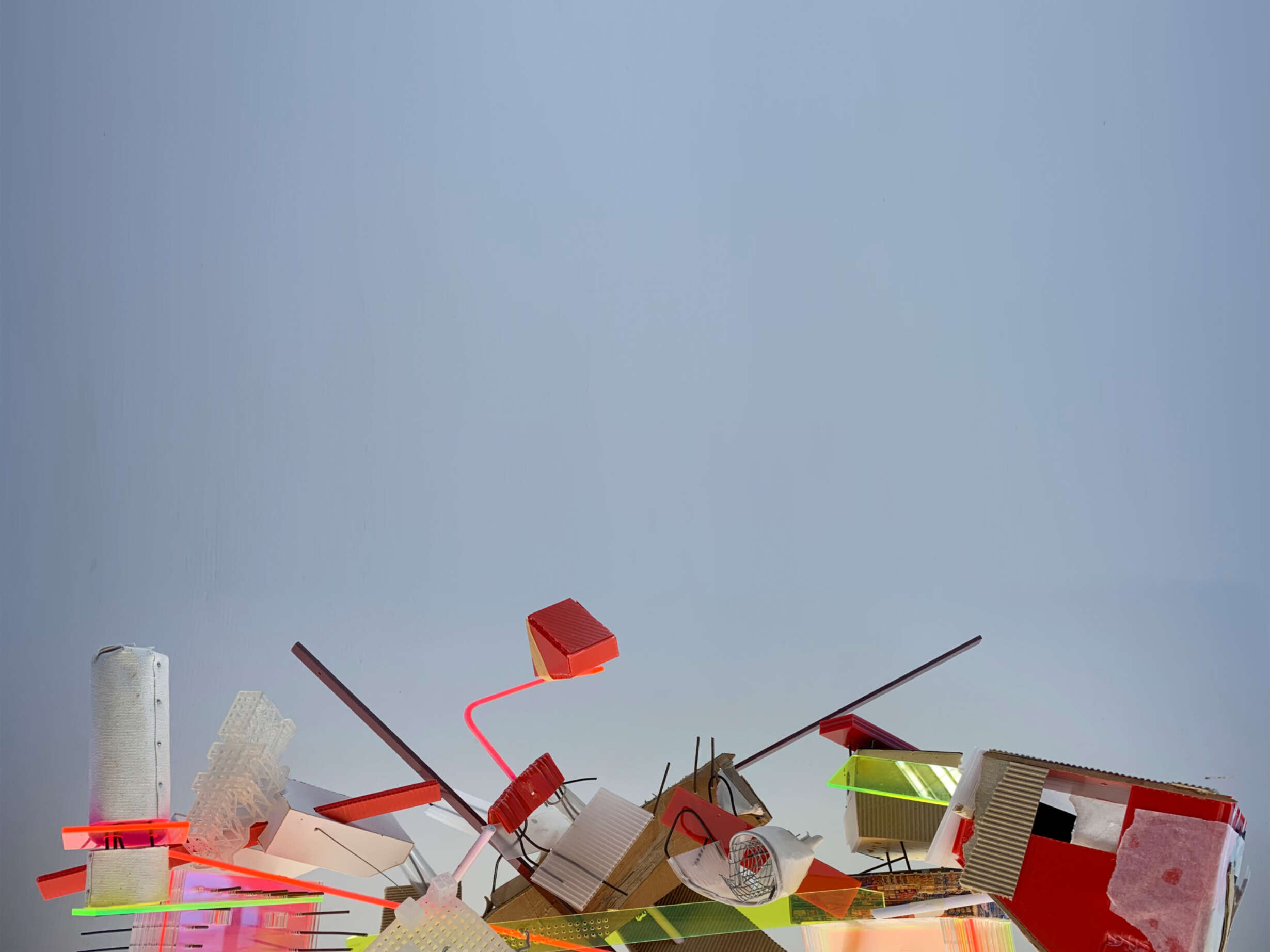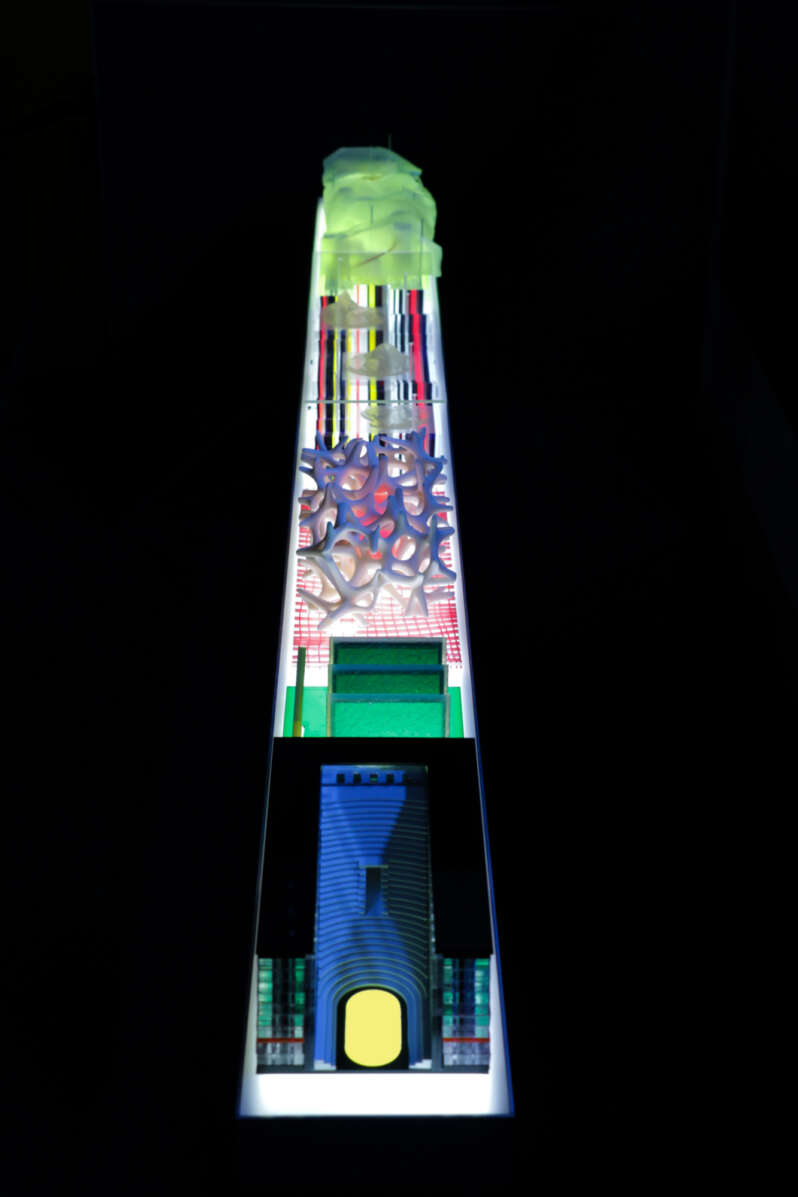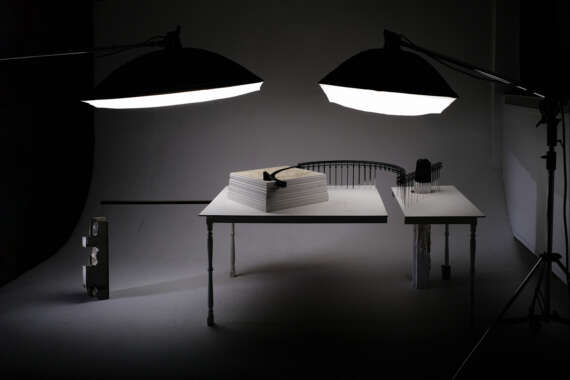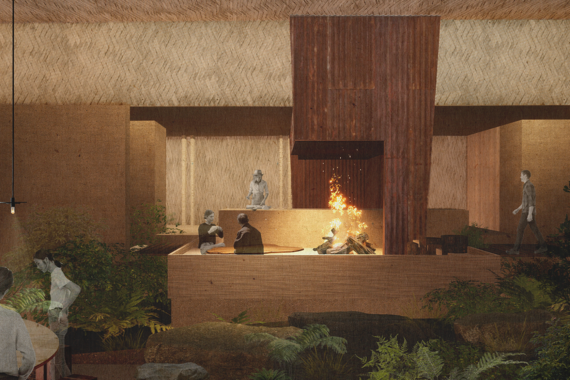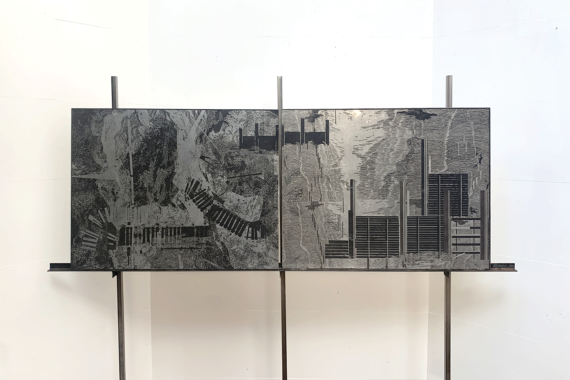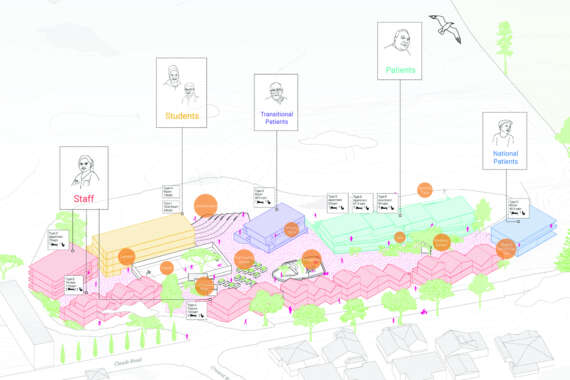Section One, The Contemporary Condition, summarises
the project’s context. Beginning by detailing the library’s dissolution from the school and identifying the neo-liberal educational landscape as the severing agent, a question of values and priorities is posed. Next, two sets of typological precedents; alternative education and occupational protest, are scrutinised in relation to the university. The section closes with a conversation between the author and the university’s Vice Chancellor, concluding an appraisal of the contemporary institution, outlining the parameters within which the project will reside.
Section Two, Forming a Position, introduces eight architectural precedents - some built, some unbuilt, some bulldozed - which informed Protest Academia’s ideological, narrative and material position. From here, the author’s creative practice, focused on scaleless ambiguity, symbolism, abstraction and fragmentation is interrogated, giving way to a linear inventory of made objects, collages and drawings.
When combined, these explorations form The Occupied Bar, detailed within Section Three. Here, with all its embedded awareness, the project narrows to its most specific point, illustrating the moment when tensions erupt and the homogenous university is divided. The Occupied Bar’s five segments, discussing: segregation, transparency, amalgamation, collaboration and autonomy, exercise the ability students have to alter their academic environment through aggressive spatial occupation.








